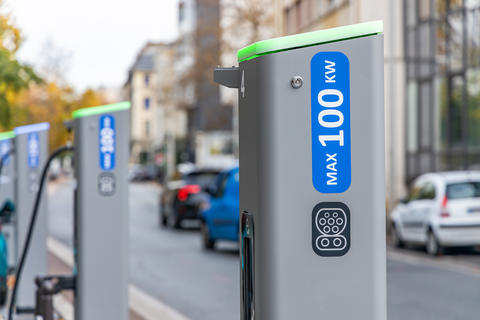
The new year 2023 brings accelerated expansion of a nationwide network of electric vehicle supply equipment (EVSE), supported by the U.S. Department of Energy and the U.S. Department of Transportation Joint Office of Energy and Transportation through the $5 billion National Electric Vehicle Infrastructure (NEVI) Program as part of the Bipartisan Infrastructure Law (BIL). All aspects of metrology - legal, scientific, and applied/industrial - support reliable equipment operation, daily customer usage, and state testing and evaluation of EVSEs that are critical to build a reliable and trustworthy EV charging network across the US.
An ambitious goal has been set to build a nationwide network of 500,000 electric vehicle (EV) chargers to help expand infrastructure for zero-emission transportation. A significant portion of the funding is to support the deployment of convenient, direct current (DC) fast charging stations to be installed within communities, working and shopping areas, and along highway corridors to facilitate long-distance travel. Given this recent (and projected) rise in the number of DC fast chargers for EVs, there is now a need for NIST to develop and provide DC power calibrations at high voltage and high current for our stakeholders and customers. This will supplement the NIST calibrations for test standards and equipment currently used to test alternating current (AC) charging systems.
The International System of Units (SI) defines the measurement of electrical quantities in terms of fundamental physical constants that are linked to convenient instrument standards for voltage, resistance, and time. NIST has been researching DC electrical power systems designed for direct traceability to primary electrical standards, thus focusing on intrinsic low current and low voltage measurements at the quantum level-the Josephson effect for voltage and the quantum Hall effect for resistance, and atomic clock-based time. A DC power calibration service that would be applicable to EVSE chargers would entail stepping up to 1000 V and 200 A measurements.
Dissemination of SI units occurs via a series of transfers. NIST reference instruments are calibrated against quantum standards, which in turn are used to calibrate a system measurement instruments that are grouped together as a calibration system. NIST calibration systems are optimized to deliver results with the lowest measurement uncertainty possible. They are meant to serve a broad swath of applications, and are limited to laboratory conditions. The NIST calibration system performs electrical measurements on application-specific devices under test (i.e., power and energy meters), termed transfer standards. Secondary transfers then occur from calibrated transfer standards to the EVSE (or an emulator) to establish the traceability chain.
The transfer of traceability is not as simple as connecting one instrument to another and pressing a button. The real electrical energy dispensed by the charging stations is 100's of kilowatt hours (kWh) for a given charging session as measured by meters and sensors internal to the EVSE, where the load is an electric vehicle. The EVSE measurement of energy for revenue purposes needs to be verified using a calibrated transfer standard. For testing purposes, phantom or virtual power may be used. In this case, calibration signals are applied to the transfer standard as voltage supplied at low current while current is separately supplied at low voltage. Although a load is not needed for transfer standard calibrations, the calibration will need to address the difference in procedures between real and phantom power.
Getting a transfer standard calibrated by NIST to establish traceability of the EVSE measurement carries some not insignificant details to be considered. It has to be capable of connecting to NIST benchtop equipment as well as to EVSEs, which use multiple connections and communication protocols to interface with specific vehicles, especially as it pertains to taking the electrical energy measurement.
NIST OWM will also develop a NIST guidance document that will outline methods for identifying and using commercially available test instrumentation to evaluate EVSEs. In partnership with NIST's experts in applied electrical metrology and calibration services, a renewed focus on the methods for establishing traceability to primary standards for the measurement of DC electrical quantities will also be included. The motivation and concept for this effort originated during a meeting (December 8, 2022) of the Electric Vehicle Fueling Equipment Subgroup of the NIST U.S. National Work Group on Measuring Systems for Electric Vehicle Fueling and Submetering during which several members asked NIST to consider taking on this work that is so critical to support the EVSE infrastructure.






